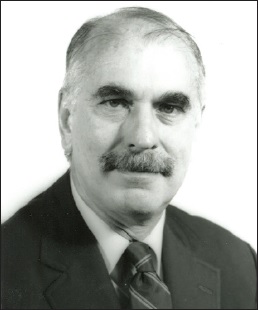Majerus In Memoriam
After a long illness, Dr. Philip W. Majerus died at home on June 8, 2016. He was 79 years old. For hematologists, Phil’s passing truly represents the end of an era that was marked indelibly by his big personality and scientific accomplishments.
Phil was born in Chicago in 1936, spent most of his childhood in Quincy, Illinois, and attended the University of Notre Dame on a tennis scholarship. Phil left college after three years, with no diploma, to attend Washington University Medical School. He graduated first in his class in 1961 and completed an internship and one year of residency in medicine at Massachusetts General Hospital. At this point, he made the crucial decision to work with Dr. P. Roy Vagelos at the National Institutes of Health (NIH), despite having no experience in laboratory research. However, he quickly found his way, and with Al Alberts, he characterized all the reactions of fatty acid biosynthesis in Escherichia coli.
In 1966, the chairman of Medicine at Washington University in St. Louis, Dr. Carl Moore, recruited Phil Majerus and Stuart Kornfeld to the Division of Hematology-Oncology, even though neither had any fellowship training. They quickly learned clinical hematology and seven years later were professors and co-directors of the division, an inspired partnership that would continue for 36 years.
Meanwhile, Phil made the groundbreaking discovery that tiny amounts of aspirin inhibit platelet function by acetylating a single site on cyclo-oxygenase. Phil’s key insight was to realize that this effect could be therapeutically useful. As he wrote in a 1976 editorial in Circulation, “Even if the incidence of myocardial infarction or atherosclerosis is reduced only 10-20%, the therapy of many ‘normal’ individuals could be justified.” In collaboration with Dr. Herschel Harter in the renal dialysis unit, he designed and completed a randomized double-blind placebo-controlled trial showing that low-dose aspirin reduces the incidence of thrombosis in the arteriovenous shunts of hemodialysis patients. This proof-of-principle study paved the way for others to demonstrate that low-dose aspirin can prevent myocardial infarction and stroke.
Phil also showed that platelets do not merely provide a nonspecific membrane surface for blood clotting reactions, but express binding sites for factors Va and Xa that accelerate fibrin formation several hundred thousandfold. Along the way, he discovered thrombospondin, which he called “thrombin sensitive protein.” He also proved that the substrate for cyclo-oxygenase, arachidonic acid, was derived from platelet membrane phosphatidylinositol, which opened another field of research. Throughout the next 30 years, he characterized most of the enzymes involved in phosphatidylinositol metabolism. In addition to their role in hemostasis, these proteins participate in neural development, cell cycle control, bacterial virulence, intracellular protein transport, and autophagy.
For his scientific discoveries, Phil received many honors, including election to the National Academy of Sciences and the Institute of Medicine (now the Health and Medical Division). He was elected President of ASH and the American Society for Clinical Investigation. He was awarded the William Dameshek Prize by ASH, the Robert J. and Claire Pasarow Foundation Award for Cardiovascular Research, and the Bristol-Myers Squibb Award for Distinguished Achievement in Cardiovascular/Metabolic Research. Phil was very proud of the accomplishments of his trainees and was especially pleased to receive the Nature Medicine/University of California San Diego Mentorship Award in 2002, conferred jointly with Dr. Stuart Kornfeld.
I first met Phil in 1983, and the next year I moved to Washington University as a new Assistant Professor. From the first day he looked after me, reading my manuscripts and grant applications, incorporating me in his multi-investigator center grant, and even sharing his hotel room at a FASEB meeting in Las Vegas. I also learned from his approach to graduate students, postdoctoral fellows and faculty members. While he disdained the notion of formal mentoring, Phil was a superb mentor, in no small part because he was fiercely loyal to his trainees and because his passion for science was, to put it mildly, legendary. Today his trainees can be found in the United States, Australia, Europe, and Japan. They include a medical school dean, two chairs of biochemistry, seven heads of hematology divisions, and a director of a medical research foundation.
In critiquing data, Phil was famously blunt and almost always right, which are precious qualities in a colleague or mentor. He could instantly see the limitations and possibilities of an experiment, and he enjoyed verbal jousting with others who might not be as quick. Anywhere in the country, a hematologist could ask, “What will you do at the next ASH meeting?” and get an answer like, “Listen to some new science and argue with Phil.” No further explanation was needed.
In addition to his spectacular work in science, Phil’s legacy includes a uniquely inspiring approach to his career. As he said in his presidential address to the American Society for Clinical Investigation in 1982, “I have not ‘worked,’ rather I have enjoyed the great fortune of doing what I please — medical research.” That sense of fun, spiced with a challenge to excel, will be remembered gratefully by his many scientific descendants.
Competing Interests
Dr. Sadler indicated no relevant conflicts of interest.

